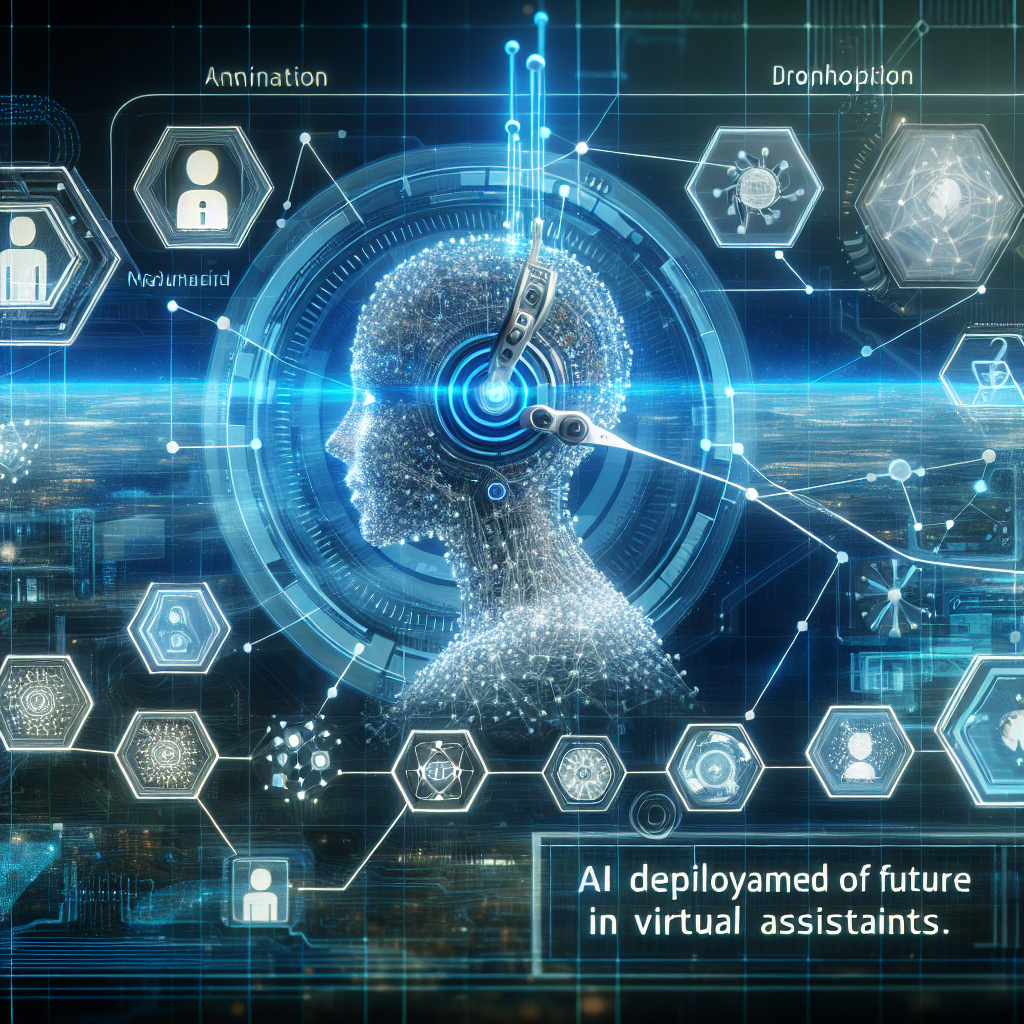The Future of AI Deployment in Virtual Assistants
Virtual assistants have become an integral part of our daily lives, from helping us schedule appointments to providing us with information on the go. As artificial intelligence (AI) continues to advance, the capabilities of virtual assistants are also evolving rapidly. In this article, we will explore the future of AI deployment in virtual assistants and how it will shape the way we interact with technology in the coming years.
AI in Virtual Assistants: Current State
Virtual assistants such as Siri, Alexa, and Google Assistant are powered by AI algorithms that enable them to understand and respond to user queries. These AI models are trained on massive datasets to recognize patterns in language, speech, and user behavior, allowing them to provide accurate and relevant information in real-time.
The current state of AI deployment in virtual assistants is already impressive, with these tools being able to perform a wide range of tasks, from setting reminders to controlling smart home devices. However, there is still room for improvement in terms of accuracy, context awareness, and personalization.
Future Trends in AI Deployment in Virtual Assistants
1. Enhanced Natural Language Processing (NLP)
One of the key areas of focus for AI deployment in virtual assistants is improving natural language processing (NLP) capabilities. This involves enabling virtual assistants to understand and respond to user queries in a more conversational and human-like manner. Future advancements in NLP will allow virtual assistants to grasp nuances in language, detect emotions, and provide more personalized responses.
2. Contextual Understanding
Another important trend in AI deployment in virtual assistants is enhancing contextual understanding. This involves enabling virtual assistants to remember past interactions, anticipate user needs, and provide more relevant suggestions based on the current context. For example, a virtual assistant could remind you to buy groceries when it detects that you are near a supermarket.
3. Multi-Modal Interaction
AI deployment in virtual assistants is also moving towards enabling multi-modal interaction, which involves using multiple input and output modalities such as voice, text, and visuals. This will allow users to interact with virtual assistants in a more flexible and intuitive way, making the overall experience more seamless and natural.
4. Personalization and User Profiling
Future virtual assistants will be able to create more accurate user profiles based on past interactions, preferences, and behavior patterns. This will enable them to provide more personalized recommendations, anticipate user needs, and tailor their responses to individual users.
5. Integration with IoT Devices
As the Internet of Things (IoT) ecosystem continues to expand, virtual assistants will play a key role in connecting and controlling smart home devices, wearables, and other IoT gadgets. Future virtual assistants will be able to seamlessly integrate with a wide range of IoT devices, enabling users to control their entire smart home ecosystem using voice commands.
FAQs
Q: Will AI deployment in virtual assistants lead to job loss?
A: While AI deployment in virtual assistants may automate certain tasks traditionally performed by humans, it is also creating new job opportunities in the field of AI development, data science, and user experience design. Additionally, virtual assistants can enhance productivity and efficiency in the workplace, freeing up employees to focus on more strategic and creative tasks.
Q: How secure is AI deployment in virtual assistants?
A: Security and privacy are key concerns when it comes to AI deployment in virtual assistants. Companies are implementing robust security measures to protect user data and prevent unauthorized access to personal information. Users can also take steps to enhance the security of their virtual assistants by enabling encryption, using strong passwords, and keeping their devices up to date with the latest security patches.
Q: Will AI deployment in virtual assistants lead to a loss of human touch in interactions?
A: While AI deployment in virtual assistants may automate certain interactions, it can also enhance the overall user experience by providing personalized and context-aware responses. Virtual assistants can complement human interactions by handling routine tasks, freeing up time for more meaningful and engaging interactions.
In conclusion, the future of AI deployment in virtual assistants looks promising, with advancements in NLP, contextual understanding, multi-modal interaction, personalization, and IoT integration. These trends will shape the way we interact with technology and improve the overall user experience. As virtual assistants continue to evolve, it is important to address concerns around security, privacy, and the impact on human interactions. By leveraging the power of AI, virtual assistants have the potential to revolutionize the way we work, communicate, and interact with technology in the years to come.

